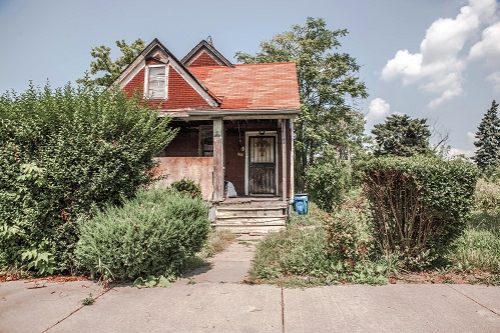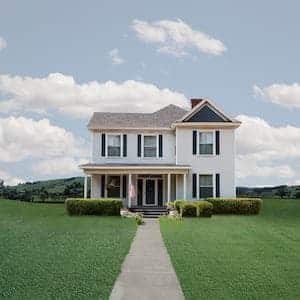Do I need flood insurance?
If you live in a flood prone area, or a region prone to hurricanes, you should absolutely buy flood insurance; in fact, you are likely required to have by your mortgage company. And even if you don't, you should consider buying it anyway. Home insurance doesn't cover flood damage, and it's the most common natural disaster in the U.S.
"Most homeowners policies do not include coverage for damage due to flooding caused by storms, the overflow of rivers and other bodies of water, or other natural disasters," says Ann E. Myhr, Senior Director of Knowledge Resources at The Institutes. This makes flood insurance a must have to fully protect your home.
"Purchasing flood insurance should always be considered as part of an overall insurance program. Those living in areas of a high flooding hazard that carry a mortgage on their property would be required by their lender to purchase and maintain flood insurance. Otherwise, the decision to carry flood insurance is optional, but important to consider," Myhr. says
Brad Goldsberry, with The Nate Bingel Agency in Northglenn, CO, suggests answering these questions about your property when considering flood insurance:
- Has your property ever flooded?
- Are you located in a 100-year flood plain?
- Do you have a basement?
- What's your risk tolerance?
- Can you afford flood insurance?
- Can you afford to not have it?
While flood insurance can be sort of pricey, especially if your home is on a waterfront, it can be a financial lifesaver if your home is severely damaged or destroyed by flooding.
What is flood insurance?
Flood insurance is a standalone insurance policy that specifically covers water damage caused by floods. While home insurance does cover sudden and accidental discharge of water, it doesn't cover overland flooding.
Most flood insurance is sold by the National Flood Insurance Program (NFIP), but it's also available through private insurers.
When is flood insurance required?
Flood insurance is required for federally backed mortgages if you live in a flood zone that starts with a "V" or an "A". These are Special Flood Hazard Areas according to FEMA.
You will be notified if you are required to purchase a flood insurance policy. Because risk maps change over time, your area may be added to or removed from a Special Flood Hazard Area on the map.
PEOPLE ASK
Do you need flood insurance in a 500-year floodplain?
No. Flood insurance is optional in a 500-year floodplain, but it is recommended. Per FEMA, these areas have a 1 in 500, or 0.2% chance, of flooding in any given year. However, flood risk is changing in many areas.
How much flood insurance do I need?
You should buy enough flood insurance to rebuild your home from the ground up; in other words, the replacement cost of your home. Flood insurance, like all homeowners insurance, protects your home up to the coverage levels you choose. The main issue with NFIP policies is that the top coverage level is only $250,000. So, if your home will cost more than $250,000 to rebuild, you will be paying the difference out of your own pocket.
Private flood insurance policies offer much higher limits. "Private flood insurance policies can often write coverage up to $2 million with personal property coverage of $1 million," says Roger Desjadon of Florida Peninsula Insurance.
"Compared to the NFIP, private market insurers are able to offer higher limits of coverage in excess of $250,000 as well as broader coverage for other structures on your property," says Thomas L. Santamorena, an insurance agent in San Francisco.
The bottom line is that yo need to consider the private flood insurance market if your home is worth more than $250,000.
PEOPLE ASK
What is the minimum amount of flood insurance required?
Your lender will likely require enough flood insurance to match the replacement cost of your home. That is based on a calculation of how much it would cost to rebuild your home at today's prices.
Where do I buy flood insurance?
When it comes to flood insurance, there are only two choices and one comes with pretty significant limitations.
NFIP is the main player in flood insurance. "Flood insurance is backed by the federal government through the Federal Emergency Management Agency (FEMA). FEMA does not write flood insurance directly, policies must be written through a licensed insurance agent. These policies are guaranteed by the government as they pay for the losses if something were to happen," advises Goldsberry.
Myhr offers the following tips when shopping for flood insurance:
- The FEMA website is a good source of information on flood insurance requirements. This site includes an interactive map that indicates areas that are more prone to flooding than other areas and consumers can enter their address to assess their individual exposure to flooding.
- In order to be eligible for NFIP coverage, the property must be located in a participating community. This information is also available on the website.
- There are limitations to NFIP policies. The NFIP provides building coverage for dwellings up to $250,000 and contents coverage up to $100,000. NFIP policies include a 30-day waiting period for newly issued policies.
- Private flood insurance is another option. In many cases, it offers more robust coverage options. Private flood insurance enables property owners to supplement or replace the NFIP product, providing coverage that homeowners expect from their homeowners policies for exposures, such as outdoor property, detached structures, swimming pools, and basements.
How much does flood insurance cost?
The cost of flood insurance can vary dramatically depending on where your home is located and whether you use a NFIP policy or private insurance. FEMA recently released changes to flood insurance rating that will affect many homeowners at renewal time.
Flood insurance rates can range from a few hundred dollars a year into the thousands.
It's important to remember that NFIP policies come with some pretty heavy restrictions. Coverage limits of $250,000 mean that many homeowners will have to supplement their NFIP policy with private flood insurance in order to be fully covered.
Private flood insurance prices can also vary widely and for high-risk properties the premium is often a shock. As an example, to insure a house in Miami Beach, which is in the highest risk “V” zone, with a policy for $300,000 in building coverage combined with $100,000 in personal property and a $2,000 deductible can cost close to $20,000 annually.
If you move the same house to a low risk “A” zone that premium drops down to $3,714. This clearly illustrates how dramatically location can impact your premium.
What is the flood insurance waiting period?
NFIP policies require a 30-day waiting period from payment for the policy to when the policy goes into effect. However, there are a couple of exemptions:
- New loans: According to the NFIP website, "If the initial purchase of flood insurance is in connection with the making, increasing, extending, or renewing of a loan, there is no waiting period. Coverage becomes effective at the time of the loan, provided application and payment of premium is made at or prior to loan closing."
- Revised flood maps: The NFIP site says, "If the initial purchase of flood insurance is made during the 13-month period following the effective date of a revised flood map for a community, there is a 1-day waiting period."
Private flood insurance companies set their own waiting periods; some have no wait.
Final tips for buying flood insurance
Here are a few final tips regarding flood insurance:
- Consider both NFIP and private flood insurance policies. Although most people buy through the NFIP, private flood insurance policies offer more coverage options and may even be cheaper.
- Ensure you know when your coverage will be active. 30 days is standard but private insurance company rules vary.
- Remember that flood insurance is also available for condos and renters, who are also at risk.
- Ensure you know what's covered and what's excluded. There are a lot of limitations on NFIP policies, and if it doesn't meet your needs, look to private coverage.
FAQ: Do you need flood insurance
Is flood insurance necessary?
Flood insurance is necessary if required by your mortgage. Otherwise, it's optional.
Does flood insurance cover additional living expenses?
Flood insurance from the NFIP doesn't cover additional living expenses. However, private flood insurance often does.




